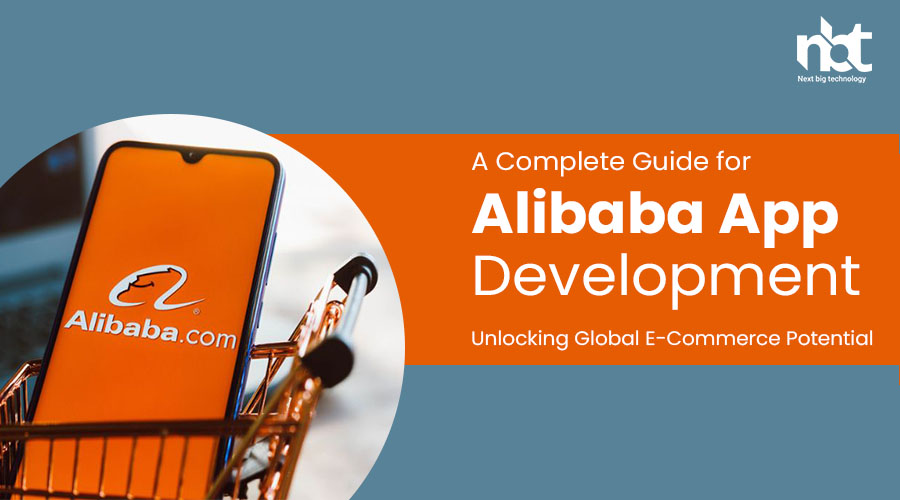Introduction:
Alibaba has emerged as a global e-commerce giant, connecting businesses and consumers worldwide. The Alibaba app provides a seamless and secure platform for buying and selling products, making it a key player in the digital commerce landscape. If you’re interested in developing your own e-commerce app like Alibaba, this comprehensive guide is for you. In this guide, we will explore the key features of the Alibaba app, the technology stack required, and the step-by-step process to develop an Alibaba-like app. Let’s dive in and unlock the potential of global e-commerce!
I. Understanding Alibaba App Development:
- Overview of Alibaba:
- Alibaba is an e-commerce conglomerate that encompasses various platforms, including Alibaba.com, Tmall, Taobao, and AliExpress. These platforms connect businesses and consumers, facilitating online transactions and enabling global trade.
- Key Features of the Alibaba App:
- Product Listings: The Alibaba app allows sellers to create comprehensive product listings with detailed descriptions, images, and pricing information.
- Search and Discovery: Users can search for products, browse categories, and discover new items through personalized recommendations and trending searches.
- Secure Transactions: Alibaba ensures secure transactions by providing escrow services and facilitating payment processes through trusted payment gateways.
- Reviews and Ratings: Users can leave reviews and ratings for products and sellers, fostering transparency and trust within the platform.
- Chat and Communication: The app offers built-in chat functionality to facilitate communication between buyers and sellers, enabling negotiations and addressing queries.
- Order Tracking and Logistics: Alibaba provides order tracking capabilities, allowing users to monitor the progress of their shipments and ensuring a smooth delivery process.
- Seller Tools and Analytics: The app offers seller tools and analytics to help businesses manage their listings, track sales, and gain insights into customer behavior.
II. Technology Stack for Alibaba App Development:
- Front-End Development:
- React Native or Flutter for cross-platform development
- JavaScript, HTML, CSS for UI/UX design
- Redux or MobX for state management
- UI frameworks like Material-UI or Bootstrap
- Back-End Development:
- Node.js for server-side development
- Express.js or Koa.js as the web framework
- MongoDB or PostgreSQL for database storage
- Cloud storage services like Amazon S3 or Google Cloud Storage for product images
- APIs and Integrations:
- Alibaba OpenAPI for accessing product listings, seller information, and transaction data
- Payment gateway integration for secure and seamless payment processing
- Shipping and logistics APIs for order tracking and delivery management
III. Steps to Develop an Alibaba-Like App:
- Define Your App’s Objectives:
- Determine the primary goals and target audience for your e-commerce app. Identify the unique features or differentiating factors that will set your app apart from Alibaba.
- UI/UX Design:
- Create wireframes and design mockups for your app’s user interface and user experience. Focus on intuitive navigation, visually appealing layouts, and seamless interactions.
- Front-End Development:
- Develop the front-end of your app using the chosen technology stack. Implement core features such as product search, listings, personalized recommendations, and user profiles.
- Back-End Development:
- Set up the server-side infrastructure using Node.js and the chosen web framework. Implement the necessary APIs and services for product management, user authentication, and secure payment processing.
- Product Listings and Management:
- Implement features for sellers to create and manage product listings, including descriptions, images, pricing, and inventory management.
- User Authentication and Security:
- Develop a secure user authentication system that ensures privacy and protects sensitive user data. Implement measures such as encryption, SSL certificates, and secure payment gateways.
- Order Processing and Fulfillment:
- Enable users to place orders, track shipments, and manage the fulfillment process. Integrate with shipping and logistics providers to ensure smooth order processing and timely deliveries.
- Analytics and Reporting:
- Implement analytics and reporting features to help sellers track sales, monitor customer behavior, and gain insights into their business performance.
- Testing and Quality Assurance:
- Conduct comprehensive testing to ensure the app’s functionality, performance, and security. Test on various devices, screen sizes, and operating systems to ensure compatibility.
- Deployment and Launch:
- Deploy your app to production servers and make it available for users to download and install. Promote your app through digital marketing channels and leverage social media platforms to reach your target audience.
IV. Conclusion:
Developing an e-commerce app like Alibaba requires meticulous planning, design, and execution. By following the steps outlined in this guide and leveraging the appropriate technology stack, you can create a robust and scalable platform that connects businesses and consumers globally. Remember to focus on user-centric design, secure transactions, personalized recommendations, and efficient order processing to provide a seamless and enjoyable shopping experience. Embrace the power of Alibaba app development and unlock the potential of global e-commerce in the digital era.










